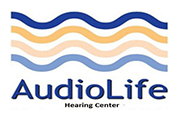
When was the last time you used that old ear trumpet? No? You don’t have one? Because that technology is hundreds of years old. Okay, I suppose that seems logical. Ear trumpets are a bit… archaic.
The modern(ish) hearing aid, as it happens, was engineered during the 1950s–the basic shape, that is. And that old model hearing aid is generally the one we remember and envision. The trouble is that a hearing aid developed in the 1950s is just about as out-dated as a hearing trumpet. To comprehend just how much better modern hearing aids are, we have to unleash our imaginations.
The History of Hearing Aids
It’s useful to have some perspective about where hearing aids started so that you can better understand how sophisticated they have become. As far back as the 1500s, it’s possible to come across some type of hearing aid (whether any of them ever actually helped you hear better is still up for debate).
The first partially successful hearing assistance apparatus was probably the ear trumpet. This device was shaped like, well, a long trumpet. The wide end pointed out and the narrow end was directed into your ear. Today, you wouldn’t think of this device as high tech, but back then they actually give some help.
When electricity was introduced, hearing aids experienced a significant revolution. In the 1950s the hearing aid that we are all familiar with was developed. In order to do their job, they used large old fashioned style batteries and transistors in a rather rudimentary design. But a hearing aid that could be conveniently worn and hidden began with these devices. Admittedly, modern hearing aids may share the same form and function as those early 1950s designs–but their performance goes far beyond what was possible 70 years ago.
Modern Capabilities of Hearing Aids
Bottom line, modern hearing aids are technological wonders. And they’re always improving. In a few powerful ways, modern hearing aids have been making use of the digital technology of the later part of the twentieth century. The first, and the most essential way, is simple: power. Modern hearing aids can store significantly more power into a much smaller area than their earlier forerunners.
And a long list of innovative advances come with greater power:
- Selective amplification: Hearing loss does not manifest through all frequencies and wavelengths equally. Perhaps you have a harder time hearing high-frequency sounds (or vice versa). Contemporary hearing aids are much more effective because they can amplify only the frequencies you have a difficult time hearing.
- Speech recognition: The biggest goal, for most hearing aid users, is to facilitate communication. Separating and amplifying voices, then, is a primary feature of the software of many hearing aids–which can be quite useful in a wide range of scenarios, from a packed restaurant to an echo-y meeting room.
- Construction: Modern hearing aids feel more comfortable because they are made of high tech materials. These new materials allow hearing aids to be lighter and more heavy-duty at the same time. And by adding long-lasting, rechargeable batteries, it’s easy to see how not only the inside–but the outside–of hearing aids have advanced over the years.
- Health monitoring: Modern hearing aids are also capable of incorporating sophisticated health monitoring software into their options. if you have a fall, for example, some hearing aids can recognize that. Other features can count your steps or give you exercise motivation.
- Bluetooth connectivity: Your hearing aids can now connect to other devices using wireless Bluetooth technology. This can be incredibly helpful every day. Older hearing aids, for instance, would have irritating feedback when you would try to talk on the phone. When you connect to your cellphone using Bluetooth, the transition is simple and communication is effortless. This applies to a wide range of other scenarios regarding electronic devices. Because there’s no feedback or interference, it’s easier to listen to music, watch TV–you name it.
Just like rotary phones no longer represent long-distance communication, older hearing aids no longer represent what these devices are. Hearing aids have changed a lot. And that’s a positive thing–because now they’re even better.
